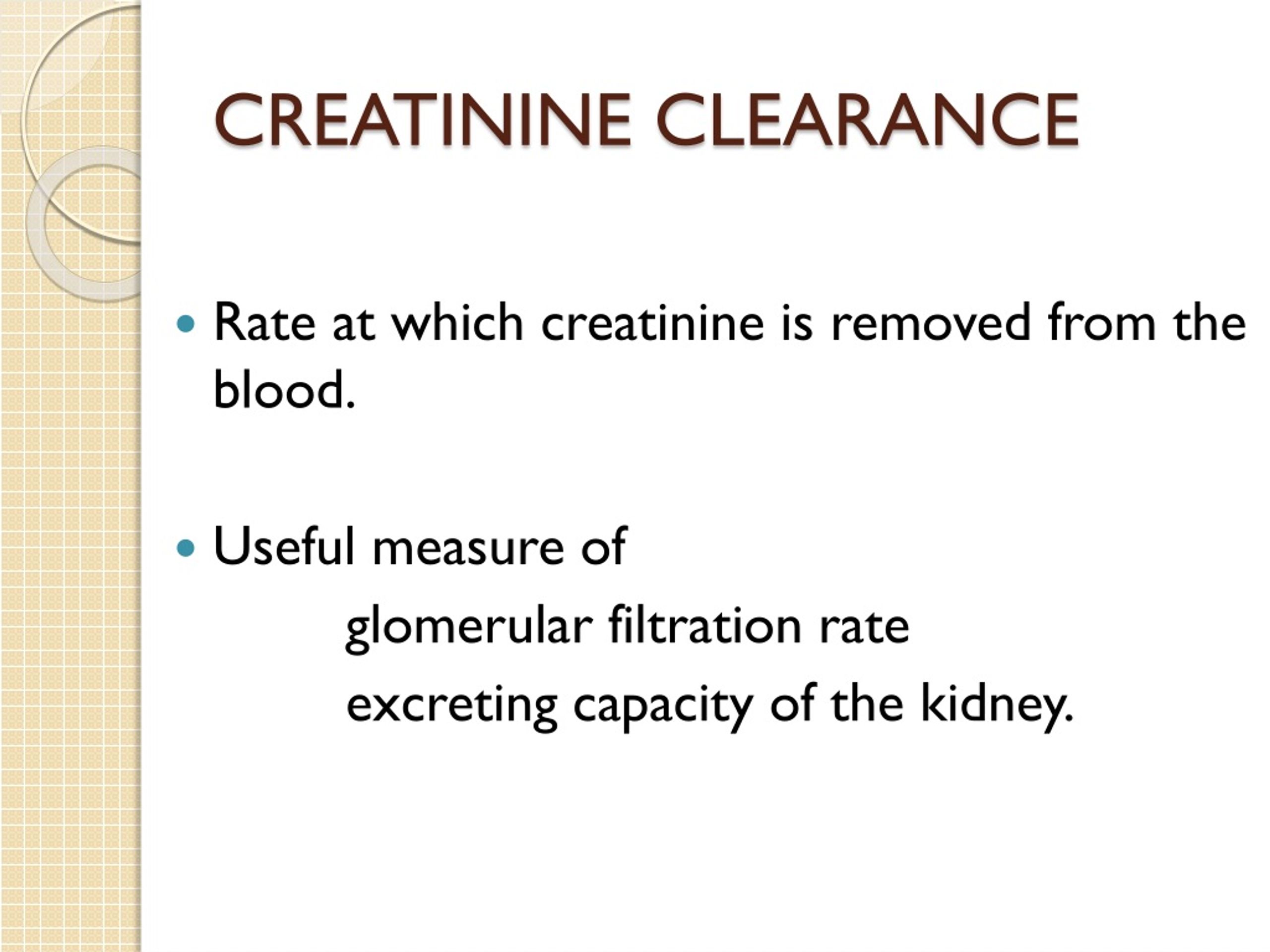

20, 21 If any correction factor is used, it is likely that a percent adjustment, similar to underweight patients, would be the most appropriate however, such a correction factor has not been studied in elderly patients. The literature does not support this practice as it often results in an underestimation of true renal function. This practice becomes even more inconsistent when an elderly patient's serum creatinine is already above 1 mg/dL. Intuitively, this practice does not make sense because rounding a serum creatinine of 0.3 mg/dL (230% increase) is much different than rounding a value of 0.8 mg/dL (25% increase). Some practitioners routinely round the serum creatinine of elderly patients (eg, > 60 years) to a value of 1 mg/dL in an effort to control for a reduced muscle mass. A newer equation, called LBW2005 19 may be a more promising estimation of lean body weight and has been derived and validated with actual patient data. This equation was not scientifically derived or validated, 15 but is extensively used in medicine. Historically, the Devine 1974 equation 18 has been used to estimate fat-free, ideal, or lean body weight (all terms generally meaning the same thing). Ideal and Lean Body Weight (Devine 1974 and LBW2005) \\ Adjusted\ weight = IdealBW + 0.4*(ActualBW-IdealBW) 17 In essence, this correction accounts for 40% of body mass above a patient's "ideal" body weight: 14 This equation is most appropriate for patients who are greater than 20-30% of their ideal body weight. The most accurate equation for creatinine clearance in obese patients is the Cockcroft-Gault equation with a 40% adjustment factor. In the process of conversion, however, the non-normalized value will also overestimate GFR in obese patients. While these may appear to circumvent the issue of obesity, these values need to be converted to a non-normalized GFR (mL/min) for the purposes of drug dosing. There are equations that report GFR as a normalized value to body surface area (mL/min/1.73 m 2). For all classes of obesity (overweight, obese, and morbid obesity), the Cockcroft-Gault equation with a 40% adjustment proved to consistently offer the most accurate estimate of creatinine clearance (often within about 5 mL/min of accuracy).The LBW2005 equation, while initially very promising, 15, 16 significantly underestimates renal function.Ideal body weight will significantly underestimate renal function.Actual body weight will significantly overestimate renal function.In one of the largest study on the topic to date of nearly 3000 overweight and obese patients, the following conclusions can be drawn: 14 While there is still significant debate regarding the optimal method of controlling for obesity, it appears that using the Cockcroft-Gault equation with a 40% adjustment is the most appropriate method. Equations that do not correct or adjust for obesity risk overestimation of true renal function. Furthermore, a change in total body mass does not increase the size of the kidney (or GFR) proportionally. Serum creatinine production is approximated based on lean body weight because muscle tissue (not fat) is responsible for creatine production. Obesity has been a long-standing problem in the estimation of renal function. Fortunately, newer data have shown that this correction factor is actually relatively accurate, with an "optimal" correction factor between 0.84 and 0.88 being the most appropriate for female patients. Historically, the Cockcroft-Gault and Jelliffe equations used an arbitrary value of 0.85 or 0.9 as a correction factor, but this value was largely based on empiric estimates with limited data. Many equations have an adjustment factor to account for the fact that female patients have less muscle mass, and therefore produce less creatinine. The study used actual body weight, but mentioned that a correction factor of some kind should be used in patients with marked obesity or ascites. The original study was based on data from 249 male patients with stable renal function. Particularly for renally dosing medications, the Cockcroft-Gault equation has been the long-standing gold standard for the estimation of creatinine clearance for decades. Populations who are Difficult to Estimate.Medications that Modify Serum Creatinine.Rounding Creatinine in Underweight Patients.Creatinine Clearance ( CrCl) versus Glomerular Filtration Rate ( GFR).


Equations for estimating unstable renal functionĬonsiderations and Variations of Creatinine Clearance.

Equations for Estimating Creatinine Clearance or GFR


 0 kommentar(er)
0 kommentar(er)
